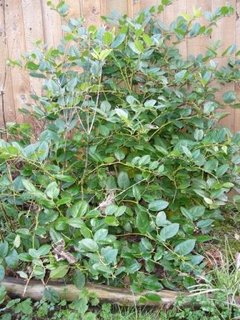Recolonization begins

Not long after I moved in, we took a weekend jaunt up the coast. Trundling along the backroads in our station wagon, we found ourselves in the middle of a clearcut.
The politics of clearcuts: On the one hand, they destroy an entire eco-system in one fell swoop, they generate a great deal of waste in the form of wood that is not ultimately marketable, and they are ugly. On the other, because much of the forests are inaccessible because there are not any roads, cutting everything in sight appears to make it economically viable (?-this logic has yet to be proven to me).
Imagine: you're driving through lovely Nature (yes, driving!) and feeling very in touch with your inner Pan. The trees are tall and green and provide a dark and mysterious shade to what may lie beyond. It feels pristine, idyllic, Edenic. Untouched by the corrupting hand of Man, of Civilization, of Commerce. You round the corner. It is tight and rocky (it's a former logging road, afterall) and you come upon a clearcut. It's a real shock. Exposed land means no more mystery. The land is scarred and blighted. Scraggly. Yet also very neat. The borders of the clearcut run straight and correspond with the maps that determine where the logging companies' leases extend.
So there I was, standing on the side of a gravel berm that seperated the road from the clearcut. At my feet there sprouted a bunch of salal seedlings, volunteers ready for recolonizing action. One of the volunteers was struggling, looking parched. I scooped it up and placed it in a yogurt container. It's roots were too shallow for the deep gravel.
I feel guilty, of course, for taking a native plant out of nature and I've never done it again. This is wrong, especially in a clearcut. But it was going to die anyhow. I suppose if I had left it, it would have died, decomposed and created a small humous groundcover that would nourish the gravel. But I doubt it. It was too close to the roadside and would have gotten squashed by the logging trucks.
When I got home, I dug up a clump of grass in the shadiest part of my garden. This area is on the northeast side of my house. It only gets the sun in the late summer afternoon. It remains wet for 50 weeks of the year. I planted the salal.
And this small seedling became the start of my native garden. The photo is of the salal bush now, six years later.

0 Comments:
Post a Comment
<< Home